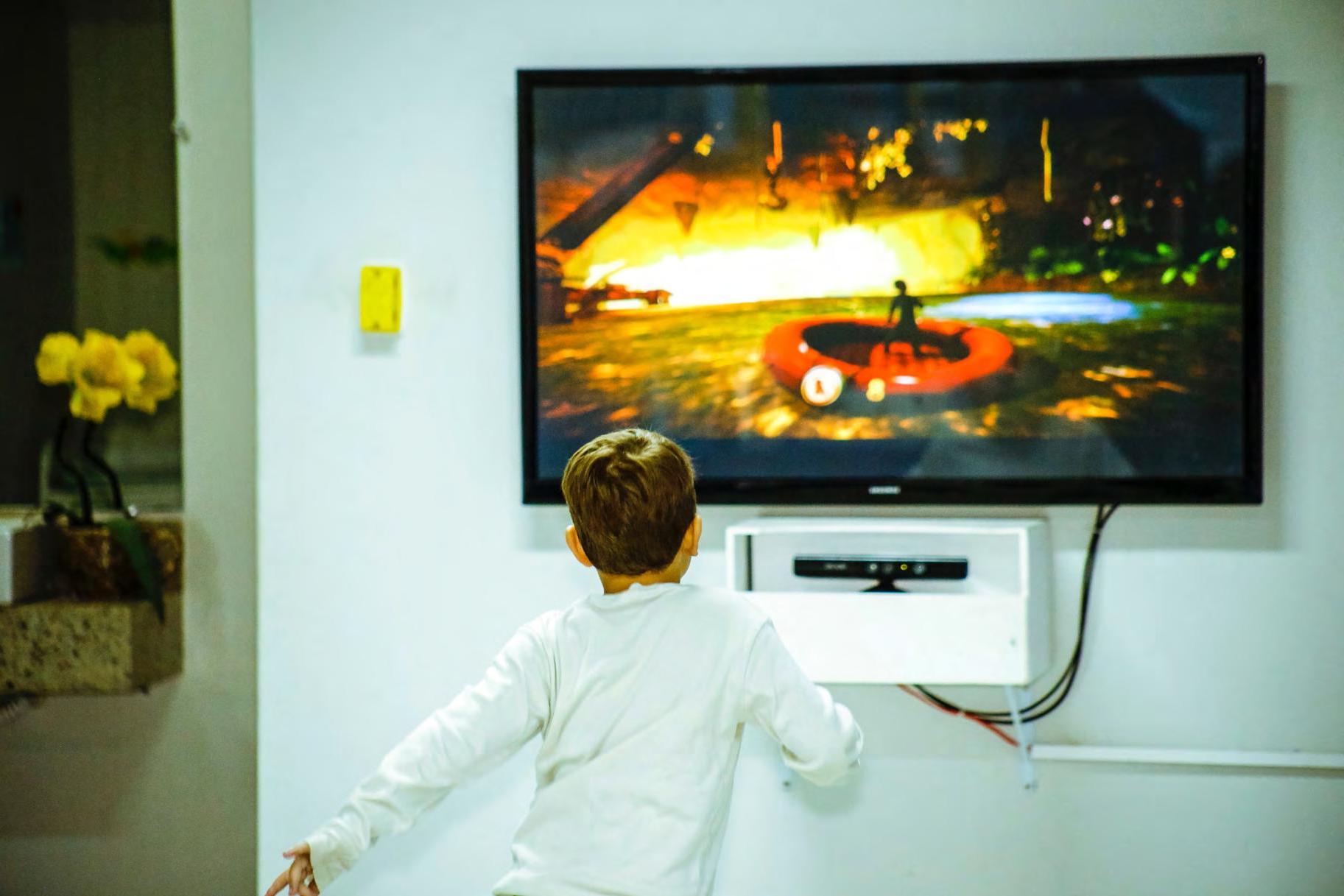
12 minute read
Feature - Pre-Christmas Marketing
Take it from media
In previous years, Toy World’s annual look at pre-Christmas advertising campaigns has focused very much on broadcast kids’ TV, but the times, they are a-changin’. In this piece, which features generous expert input from Generation Media, KidsKnowBest and Azure Media, Rachael Simpson-Jones takes a deep dive in the Q4 marketing space to find out how the pandemic, stock shortages, viewing habits and more are impacting toy companies’ plans.
In the same way that it accelerated a major shift to eCommerce among retailers and consumers, the pandemic has accelerated a shift to digital viewership that, our experts tell us, was already taking place long before Covid showed up.
“Prior to the lockdowns, kids were spending an increasing amount of their time in on-demand platforms, be that video or gaming - basically media they can switch on at any time instead of content being scheduled,” notes Tristan Brooks, managing partner & head of Client Services, Azure Media. “This trend has been driven through growing access to digital devices and video on demand services like Netflix. With kids at home over the lockdowns, parents invested more in technology and media services to keep themselves and their kids connected, educated and entertained. This means kids are now spending more time with the media platforms they enjoy, as well as discovering new content as their media worlds expanded. There are now more households in the UK than before with greater access to content. Viewing is unlikely to shift back, so advertisers need to understand how their media worlds have evolved to be able to reach, interact and engage them.”
In the first six months of this year, Jon Chambers, director of AV Investment at Generation Media tells me, kids’ TV channels reported a combined decline of -25% YOY in terms of commercial impacts. Taking a longer-term view, this figure stands at -55% over the past five years (2021 vs. 2017).
“During the pandemic, the biggest recipients of audience migrating away from children’s TV were SVOD platforms such as Netflix and Disney+,” adds Generation Media’s business director of Digital, Felix Lewis. “According to Kids and the Screen data provided by Giraffe Insights, in October 2019 SVOD services accounted for 23% of viewing occasions (Live TV = 28%, Online Video = 24%). By October 2020, this had risen to 31% ahead of both Live TV (23%) and Online Video (21%). In the latest wave of data, however, (April 2021), we are witnessing general viewing fatigue across all platforms as viewers become more time poor. There are less opportunities for long binging sessions, meaning SVOD’s lead has been eroded to 29% and Live TV has gained share - although not time - at 26%. TV’s share however has been largely held up by the diversification of what children are watching; the greater focus on family time has continued post lockdown, meaning more shared viewing experiences such as sports, movies and Saturday night entertainment (not forgetting Love Island either). Online video, such as YouTube, has been the most consistent player throughout this entire period, and with costs becoming preferential over Live TV, it will provide the most compelling rival to TV for advertisers spends in Q4.”
KidsKnowBest, an agency that focuses predominantly on digital and social, has witnessed another impact from the pandemic first-hand - the need for speed. Rob Lough, co-founder and chief brand officer, says that with the pandemic creating a situation of ongoing behavioural change, and big TVC productions becoming harder to execute on, the route to entry on digital and social media is much easier. Rob also says that his agency is seeing far more strategies geared towards earlier launches. He explains: “In previous years, November and December would be the key months of focus, but with competition hotting up and the route to market becoming far easier for smaller brands through digital with D2C [direct to consumer], we are seeing October and even September marking the start of the Christmas push.”

Jonathan Chambers - Generation Media

Tristan Brookes - Azure Media

Felix Lewis - Generation Media

Rob Lough - KidsKnowBest
During research for this piece, both Generation Media and Azure Media raised a further hurdle facing TV advertising, one caused by an issue extensively reported upon by Toy World in recent months – supply chain problems. As Jon Chambers explains, stock shortages caused by ongoing shipping issues will mean some advertisers aren’t able to commit as early to bookings as in previous years, meaning they will prioritise channels which offer the shortest lead times. While TV supply partners are working hard to offer the toy market as much flexibility as possible, giving marketers more time than in previous years to make the right decisions for their budgets, they are constrained by the limitations of the declines in their audience and will therefore have to prioritise accordingly.
“The ongoing issue with disruption in the supply chain is causing unforeseeable changes to campaigns, so we’re working very closely with our clients whilst managing the media sales houses to keep them as flexible as possible,” adds Azure’s Tristan Brooks. “This is a unique year with unique challenges, but we’ve had the foresight and time to make sure we’re prepared to deal with these as they arise, coming into the final quarter. Where there’s limited media availability, as there is with Kids TV, investment commitments need to be made earlier; however, we’ve worked with clients to build more flexibility into media plans. I see this being the new normal - digital media will take greater investment and can be switched on much more reactively according to requirements.”
Felix Lewis also offers his perspective, noting that while in previous years this disruption would have presented a significant challenge to the toy industry, due to TV’s market-leading cost and effectiveness, a plethora of cost viable alternatives are now available across the digital spectrum, led by YouTube. He says: “With much shorter lead times, and, at present, lower demand from advertisers, inventory availability will not be an issue for those looking to approve bookings later. More importantly, the effectiveness of these channels in comparison to TV is improving all the time. TV has long led the way when it comes to marketing metrics such as brand recall, but a recent study by Giraffe Insights revealed that 55% of US children (aged 2-12) remember seeing adverts on YouTube. When asked ‘Where do you see the best adverts?’, YouTube emerged as a resounding No.1, ahead of TV, TikTok and Instagram respectively. Therefore, expect to see some advertisers employ 100% digital strategies where it makes sense to do so for their brands.”
Felix continues: “We must also remember that stock challenges are not isolated to the toys and games market. There will be many other industries impacted by the shipping crisis, plus the supply of microchips. As a result, we are likely to see spend reductions from categories such as automotive and tech. This being the case, it could open opportunities that are usually the reserve of multinational corporations - such as high-profile online takeovers or prime time TV sponsorships - at lower costs, as media owners look to maximise their inventory in the face of reduced demand.”
Going back to what Felix said earlier, ‘Plethora’ is an accurate word when it comes to describing the digital marketing space. It’s both vast and varied, spanning YouTube, TikTok, Facebook, Instagram, Twitter, Pinterest and LinkedIn, plus specialist kids’ networks, and more. With great choice comes great decision making – when there are so many ways to reach consumers, how do you sort the wheat from the chaff in terms of what works for your brand?
“The same way you would separate radio, cinema and TV: it’s about consumers’ needs,” answers Rob Lough. “Advertising and content have never been a one-size-fits-all market. The reason a person uses TikTok is completely different to the reason they use YouTube, Instagram, Roblox and other social platforms. For example, KidsKnowBest recently ran a study looking at influencers on different platforms. On TikTok, users weren’t watching any one specific influencer. Engagement instead focused on content themes, be that dances, pranks or challenges. On Instagram and YouTube, however, users predominantly have a favourite creator and follow them. This sort of insight is key to brands' social media strategies. Campaigns have to be able to cater to the audience in the same way a radio or billboard ad would.”
“When marketing in this space, think of your splits,” Rob adds. “It’s complex, as the end user isn’t necessarily the gatekeeper to purchase. This is very rare in marketing and needs consideration given to business goals. For example, are you building a brand or are you just trying to shift as much product over Christmas as possible? It’s easy to say both, but if you can zone in on this, you’ll be able to achieve balance in that crucial split between awareness and conversion. Once you know the answer, the rest should fall into place.”
By now, we’ve established that digital is the king of the toy marketing space, but I was keen to ask our experts what kind of marketing share the different sectors and platforms might enjoy this year. Interestingly, Rob Lough was keen to highlight the potential offered by the gaming space, specifically the metaverse, which he says is ‘hugely untouched and misunderstood’. Rob says: “Navigating the compliance and safety of this space is key, so using the right partner is vital. When done well, brands are engaging with an audience that they know is bang on their target market in a creative, engaging and innovative way. It’s the next level of experiential marketing.”
Felix was also happy to share his opinion, telling me that in line with the wider advertising industry, where ~70% of media spend reportedly goes on digital, he expects to see continued increases in digital investment across all channels. Drilling down further, he says YouTube will be the market leader, especially whilst TikTok ‘irons out its approach to children and family targeted advertising’. He adds: “Specialist children’s networks such as SuperAwesome and Playwire will also be far more prominent on media plans, especially on their gaming platforms as this continues to demand a higher and higher share of children’s time. According to the latest Little Voices report published by Giraffe Insights, 48% of parents of children aged 4-9 allow them to play over one hour per day. That’s more than the average 4-9 year old spends watching TV (45 minutes per day, Jan-Jun 2021, BARB).”
Jon, meanwhile, says that within the TV market, readers should expect to see VOD services from broadcasters (Sky, ITV, Virgin and so on) and emerging partners (Kidoodle, Ketchup, etc.) take a significantly higher proportion of spend YOY. In his opinion, this situation will lead to TV being ‘truly challenged’ at the top of the children’s marketing pyramid, likely resulting in a scenario in 2022 where less than 50% of toy advertising spend will be placed on TV.
He adds: “However, to apply percentages against each media channel is relatively illogical for most brands. Every product is unique and will have its own set of marketing objectives and variables to achieve, each of which will be best served by different media. This is why we have used our industry experience and insights to build The Media Aggregator, our unique planning tool which assesses each brief on its own merits and recommends a completely bespoke percentage split for every single campaign.”
At Azure Media, the approach is to focus on teasing out valuable and directional insights upfront before looking at splitting media budgets. Once both the agency and its clients understand the target audience, the media lives of those within it, the people and brands of influence within the space, the role the product/service can play, and has examined whether they have the right creative content to succeed, then it’s time for the next discussions – agreeing an integrated media and creative strategy, in addition to proposing a budget breakdown by platform.
“We see understanding and activating fandoms as a growing area of opportunity as kids spend more time in media they and their friends choose to be in,” says Tristan. “Being on trend in these spaces, speaking their language with the right products in the right way can be highly influential, especially for more established brands and licences. I would say there is much more focus now on harnessing different media across the customer journey including point of purchase, so I see conversion media like marketplace investment growing. It makes no sense for advertisers to be investing in creating product awareness and demand, only to lose it to a competitor at the point of sale. This is why Azure offers full-service eCommerce and marketplace management and support.”
By this point, you might be thinking that the picture for TV is a bit bleak. However, our experts from Generation Media did point out that for many toy brands, TV remains the best way for toy and games companies to get their products in front of kids. This is especially true between January-August, when the cost advantage offered by TV is far superior when it comes to building effective reach beyond the 1+ level. Jon does note, though, that as supply and demand issues mount during Q4, TV’s cost advantage erodes. But it’s not all doom and gloom for TV at this time of year; Jon notes that there is still something to be said for the power of ‘as seen on TV’, telling me: “We have seen from Giraffe Insights studies that while softer metrics, such as brand recall and favourability, are increasing for YouTube and other digital channels, TV still holds a lead over its rivals when it comes to harder metrics such as ROI.”
We’ll give the last word to Rob Lough, who has some sage advice for those still pondering their marketing strategy for this Christmas: “Do your research. Contextual marketing is everything. Forget about your demo and really dig into what the product you are marketing stands for, and where it should be marketed. It’s easy to suggest influencers or platforms such as gaming, TikTok, TV, YouTube etc., but the question has to be why you’re suggesting them. The right to play is everything - double down on where a product should be marketed, and don’t just go down an avenue because it feels like you should.”
Over the coming pages, Toy World catches up with a number of major players within the toy industry and finds out how they are choosing to market their lines this festive season.











